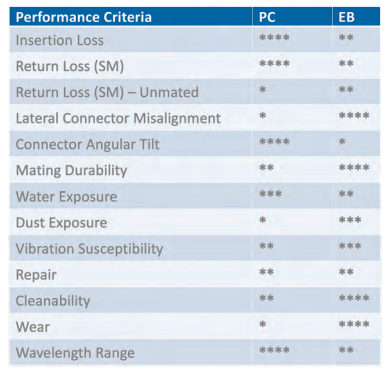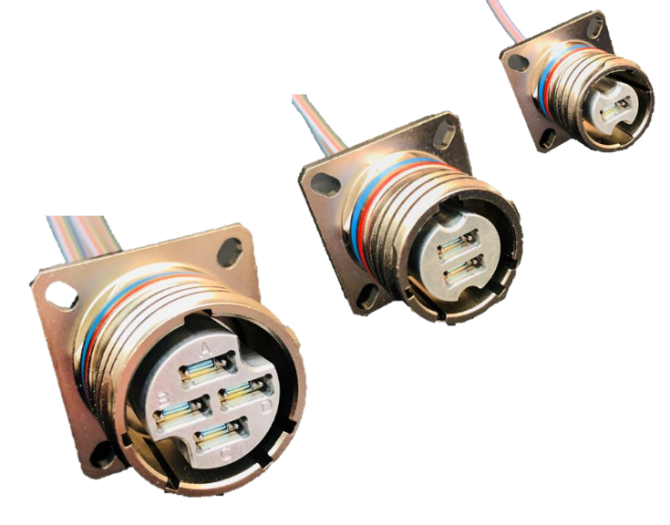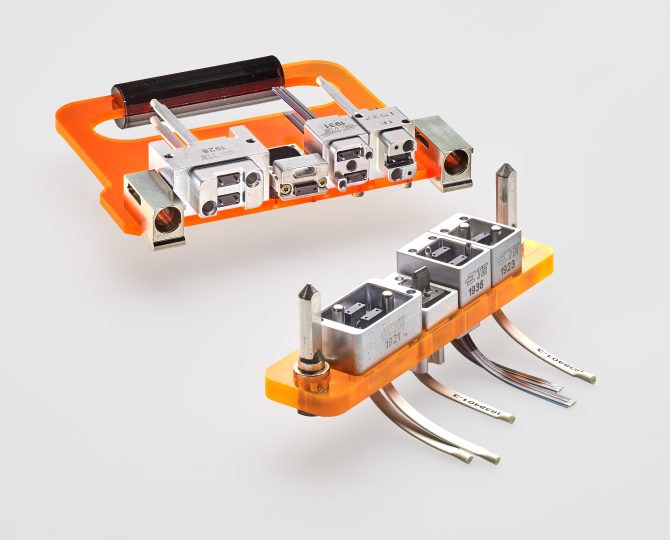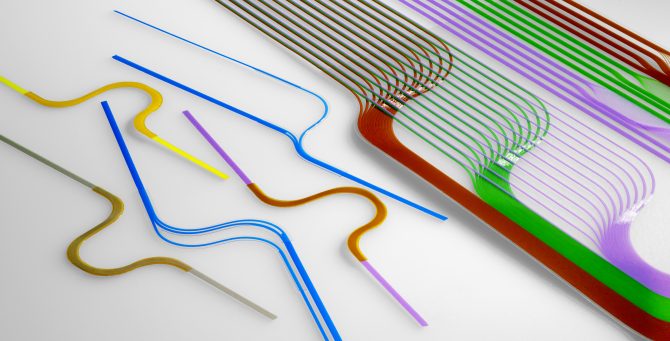
Selecting rugged fiber optic connectivity solutions
By Mark Benton, rugged fiber optics engineering and active products manager, TE Connectivity
Electronics connector fiber opticHere are the five things you need to know
- Understand your target and the technology tradeoffs needed to hit it
As with any project involving electronics, the kinds of components selected depend on the performance criteria the project is trying to meet. There is no single solution that will always work in every situation. Therefore, it’s important to understand the tradeoffs between different technologies when aiming at your performance target.
Fiber optic connectors are used to couple a light source, receiver, and other components to a fiber optic (FO) cable. Of the many types of fiber optic connectors, each generally employs one of two connection technologies:
- Physical contact (PC) technology that physically mates the two ends of optical fibers together
- Expanded beam (EB) technology that uses lenses at fiber end faces to expand and re-focus light within a small air gap in the optical pathway.
When selecting between the two types, considerations include environmental variables (exposure to water, dust, vibration), termination finishes (insertion loss, return loss, misalignment, angularity), maintainability (repair, cleanability, wear), and cable limitations (bend radii, wavelength range). Clearly understanding your operating environment and your signal power budget is critical in connector selection.

Figure 1: A comparison of physical contact (PC) and expanded beam (EB) fiber optic connector features. Courtesy TE Connectivity.
As shown in Figure 1, PC connector technology excels at minimizing insertion loss (IL) and return loss (RL) while maximizing wavelength range. On the other hand, EB connectors are more tolerant of misalignment, vibration, dust, and wear, because of the small gap in the optical pathway eliminates maintaining pristine physical contact.
- Don’t be dense about density requirements
Another high-level consideration is the application’s signal density requirements. Today, there is a real push for higher density—especially inside the box for VPX embedded systems. For I/O between boxes, there’s demand for high fiber path count through small 38999 connectors. Single fibers and single contacts increasingly can’t be used, because there just isn’t enough space to aggregate them to create multiple paths. The alternative is to group them in a ribbon and terminate them in a multiple fiber ferrule, namely, a mechanical transfer (MT) ferrule connector. In the commercial datacom world, MT fiber optic ferrules provide super-high-density interconnects that accommodate 12 to 96 fibers in a compact and lightweight ferrule. MT ferrules deployed in VPX applications in harsh environments typically have 12 or 24 fibers per ferrule resulting in up to 48 fiber paths in a half VPX module. Plus, there are MIL-DTL-38999 Series III based expanded beam connectors available that provide one-turn self-locking anti-vibration coupling mechanism for up to 96 optical channels (Figure 2). With these solutions, you can get the best of both worlds—high signal density and harsh-environment performance.

Figure 2: TE Connectivity D38999 Series Ill Style Circular Connectors with a self-locking, anti-vibration coupling mechanism and up to four MT ferrules capable of accommodating up to 96 optical channels. Source: TE Connectivity
- Know the Ins and Outs of Termini
How the connector is terminated is important in reducing insertion loss (IL) and back reflection. For PC connectors, two basic polishing approaches can be used. Flat polished surfaces for PC and ultra—physical (UPC) contacts are generally acceptable for digital optical traffic. But for optical sensing applications (such as light detection and ranging [LiDAR]) and radio frequency (RF) over fiber applications, return loss (RL) needs to be minimized. In these cases, angle polished ferrules (APC) are used to minimize RL.
For EB connectors, lack of physical contact reduces mating forces. Because lower or no spring force is required, EB connectors maintain consistent IL over multiple mating cycle. Robustness is also enhanced in harsh and dirty environments as previously mentioned—but with additional expense.
That’s because with EB connectors, subcomponents and ceramics must be combined with proper termination and polishing procedures. The contacts inherently involve lenses, which add cost. However, when properly constructed, EB connections can yield consistent IL values less than 1.0 dB.
The same polishing/performance rules apply to MT ferrules, which are molded as flat (typically for multimode fiber) or APC (typically for single mode fiber) configurations. In terminating these various designs, changing the polishing fixtures is the main difference. Lensed MTs (EB) typically have the lens molded into the ferrule, so no polishing step is required, but you have to cleave the ribbon fiber precisely.

Figure 3: TE Connectivity’s ruggedized optical backplane interconnect system meets VITA 66.1 and 66.4 open architecture specifications for VPX systems and provides a high-density, blind-mate optical interconnect in a backplane/daughtercard configuration. The fiber optic ribbon cable interconnect feeds through the backplane to removable system modules using MT ferrules. Source: TE Connectivity
- Understand Connector Materials, Form Factors, and Sizes
The ferrule—the rigid tube used to protect and align the end of a fiber—is a very critical connector component. Fiber optic ferrules can be made of ceramic, metal, or composite materials. Generally, fiber ferrules for PC connectors are made from ceramic or metal materials. Each material has its benefits and drawbacks, with ceramic or metal ferrule typically used for harsh-environment applications.
Ferrules are next supported in inserts, which also come in a range of metal, composite, and polymer materials. Choice trade-offs typically are lower weight versus higher durability, materials compatibility with various fluids, and, in some cases, the need to incorporate face seals on the inserts.
Various connector form factors are available, namely rectangular and D38999 circular styles with metal and composite shells, inserts, and related components. Typically, the shells and other components used are the same as with copper versions. The inserts, however, are dedicated to FO contacts or in some cases hybrid (copper and FO) contacts. The latter is typically only used in low-mating applications because oxides from copper may contaminate the FO termini.

Figure 4: TE Connectivity’s versatile, high-density Optical Flex Circuit Cable Assemblies can be utilized for card-to-card or backplane applications and offer multiple options in terms of cable assembly designs, connectorization, and routing. Source: TE Connectivity
- Wrap Your Mind Around New Cabling Options
A fiber optic cable consists of five main components: core, cladding, coating, strengthening fibers, and cable jacket. Cabling considerations are influenced by whether cables are being routed within a box or between boxes or active devices in limited spaces.
As mentioned previously, multiple fiber ribbon cables can accommodate multiple paths. Moreover, ribbon cable can be broken out into individual contacts. This is often the case between MT ferrules on the VPX backplane to the I/O box connector in those cases where traffic routes to multiple locations or the end points.
Optical flexible circuit assemblies (FCA) are an advance over flexible flat ribbon cables (FFC). Comprised of hundreds, even thousands, of individual fibers precisely positioned on a single rugged substrate, FCAs offer a multifiber management solution for high-speed electronic packaging. FFC advantages include:
* Full customizability for both card-to-card and backplane applications, with one defense application using an FCA that has 3000 paths
* Ruggedized with thin film encapsulating each fiber for protection in the harsh environments of aerospace, commercial and military aircraft, and defense systems.
* Versatility of employing crossovers to minimize stress while fitting complex routing arrangements
* High backplane-level speeds between two processor cards with all the I/O coming off a parallel transceiver through the FFC operating just as fast as a backplane.
Moreover, new material sets are becoming available to handle space applications as well as traditional aerospace and defense (A&D) applications with stringent radiation-hardening and volatile organic compound requirements.
———————————————–
TE Connectivity is a global supplier of rugged fiber connectors for harsh environments. For more information, visit:
https://www.te.com/usa-en/campaigns/industrial-solutions/rugged-fiber-for-rugged-applications.html
